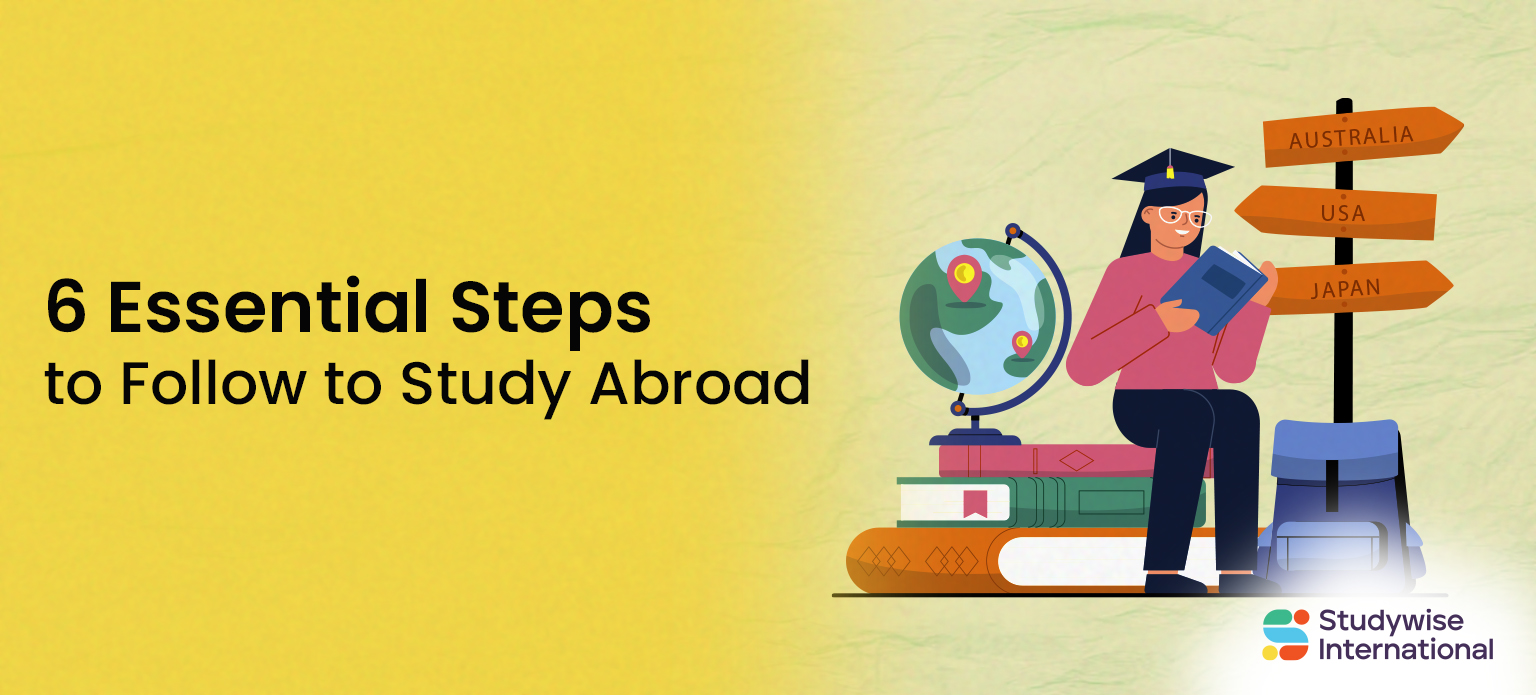
6 Essential Steps to Follow to Study Abroad
- Categories All Study in Abroad Blogs, Studying Abroad
- Date June 4, 2024
Planning to study abroad but have no idea where to start? We know what it is like. Over the years, we have seen lakhs of students fondle with the desire to study in the world’s top universities. We know almost half of them do not know what courses they could pick or what documents to compile in their visa files. And we have helped them all achieve their dreams with the utmost dream. As they should. Studying abroad should be exciting. But instead, the decision-making and documentation processes make it mind-numbingly stressful. Whether you are pursuing an undergrad course in Canada or an MBA in Germany, no school has prepared you for that. Fortunately, this blog will. Let’s dive right in!
Pick a Study Destination
It must have gotten you to wonder. Should we be choosing a location before we choose a location? The answer is yes. Well, more often than not. Some top popular destinations with Indian students are the UK, Canada, Australia, the USA, Germany and Ireland. Aspirants wishing to pursue an undergrad course can pick a location based on the cost of living, climate, involvement of relative(s), ease in visa application and acceptance rate. All these destinations have their courses built on quality education, state-of-the-art infrastructure and facilities. Picking one doesn’t necessarily mean losing out on the benefits of the others’. Language is barely a barrier here as most use English as their conversation language. However, speaking with the locals in Germany could be a little tricky.
On the other hand, choices differ for students who want to pursue courses with honours, specialisation and research at grad level as well as master’s level. Each study destination contributes to different fields. Students can shortlist locations after factoring in the availability of required resources, and the recognition and scope of the location within their fields. These countries will not only help you gain quality theoretical knowledge but also open gains to hands-on learning with practical training, internships and more. Further, if you plan to work while and after completing your studies, explore the job opportunities beforehand.
Work out the Finances
Believe it or not, studying abroad will cost a fortune. The biggest pieces of this pie are reserved for tuition fees and the cost of living. Let’s look at them closely. Pre-arrival expenses include the cost of university applications, visa applications, health insurance and the required shopping. When living abroad, students can bank on expenses for phone, electricity and other utility bills besides rent, transportation and food. Students can sit with their parents, guardian or sponsor to outline their financial needs and work out a budget.
The education fees in both Canada and the USA start at 6,20,000 INR per year. The higher level courses in the USA, however, could cost almost thrice as much as that in Canada. At the same time, it would beat Canada in affordability by half as much. Options much less expensive than either of them are Australia and Ireland. Education is free in Germany. Consequently, the competition is cut through. On the other hand, the benefit of studying in the UK is its shorter courses. Furthermore, they can also look for sponsorships and other financial aid available for their chosen countries. The Indian government help students live their dreams by extending scholarships like Fulbright-Nehru Master’s and Doctoral Fellowships, Erasmus Mundus, and National Overseas Scholarship.
Related blog: Budget Living in Major US Cities for International Students
Choose Your Course
Start with listing all courses available within your choice of location alongside the universities. Secondly, create a separate list of your interests, strengths and scope of improvements. Now, let’s connect the dots. One must select a course reflecting on their future goals and prospects. If you aim to be an experimental physicist, perhaps choosing to study theoretical physics may not give much contribution to your goals. Ponder over your life goals by factoring in your interests and strengths. Students can choose from full-time courses, short-term courses, executive programs and virtual courses. Once you have pictured your future, shortlist your course list with only those who provide a roadmap to your goals. Alternatively, draw the outlines of their potential by consulting with an education expert.
Choose Your University
The shortlisted list of courses will highlight the universities you could possibly be a part of. Spend some time on genuine research to see their ranking, performance and placement. Universities’ rankings are fabricated based on their overall performance and course performance. Students often oversee the latter. However, it is a crucial step in finding a university on your own. Always check how the university is performing in your department. For instance, an X university ranking in the top 100s wouldn’t necessarily have quality facilities for your course. Once your list starts shortening, reach out to alumni to seek some quality reviews. You may also dig into the number of international students in your shortlisted universities to improve networking opportunities.
Related blog: Become Successful in Choosing Your Course and University
Prepare for Entrance Tests
Typically, UG courses don’t have any entrance exam. However, universities do have certain criteria when it comes to accepting students from non-English-speaking countries. Most of them have standardised IELTS and PTE as the mandated English Proficiency Tests. Candidates can compare the test formats and bars to choose one to be eligible for admission. The eligibility scores vary according to the study destination, university and choice of course. To give you a general idea, to study in the UK, the minimum IELTS score required for 6.0-7.0 and a PTE-A score of 43-59. To study in Canada, consider the minimum score of 6.0-6.5 bands in IELTS or 59-75 in PTE. Studying in Ireland demands 6.5-7.0 bands in IELTS or 60 in PTE. Moreover, postgrad students must appear in the GRE to be eligible for the course. A score between 152-158 is considered good.
Read in detail about IELTS, PTE and GRE
Apply for Visa
Students can only apply for a visa after getting accepted to a university. Applying for a visa is where most fast-running trains come to a halt. Not only is the process tedious but highly extensive. The documentation and process vary from different countries. Some common documents required are passport-sized photographs, a valid passport, a letter of acceptance from the university and proof of maintenance funds. Some countries have mandated the purchase of national health insurance as a part of the visa process. Health tests and certificates might be asked for too. Additionally, students must prepare for the interviews as an integral part of the visa process.
Related blog: Student Interview Questions and How to Answer Them
Ready Steady Po!
It would all feel worth it when you step into your dream university for the first time. When the excitement sets in taking the lectures in the environment you had only dreamt of. But the process is a bit too much, isn’t it? Let us help you through, so you focus on only what needs your attention. Connect with Studywise International for a FREE CONSULTATION today!
You may also like

Ireland Intake 2024-25: Universities & Preparation Timeline

TOEFL Scoring System and Validity


